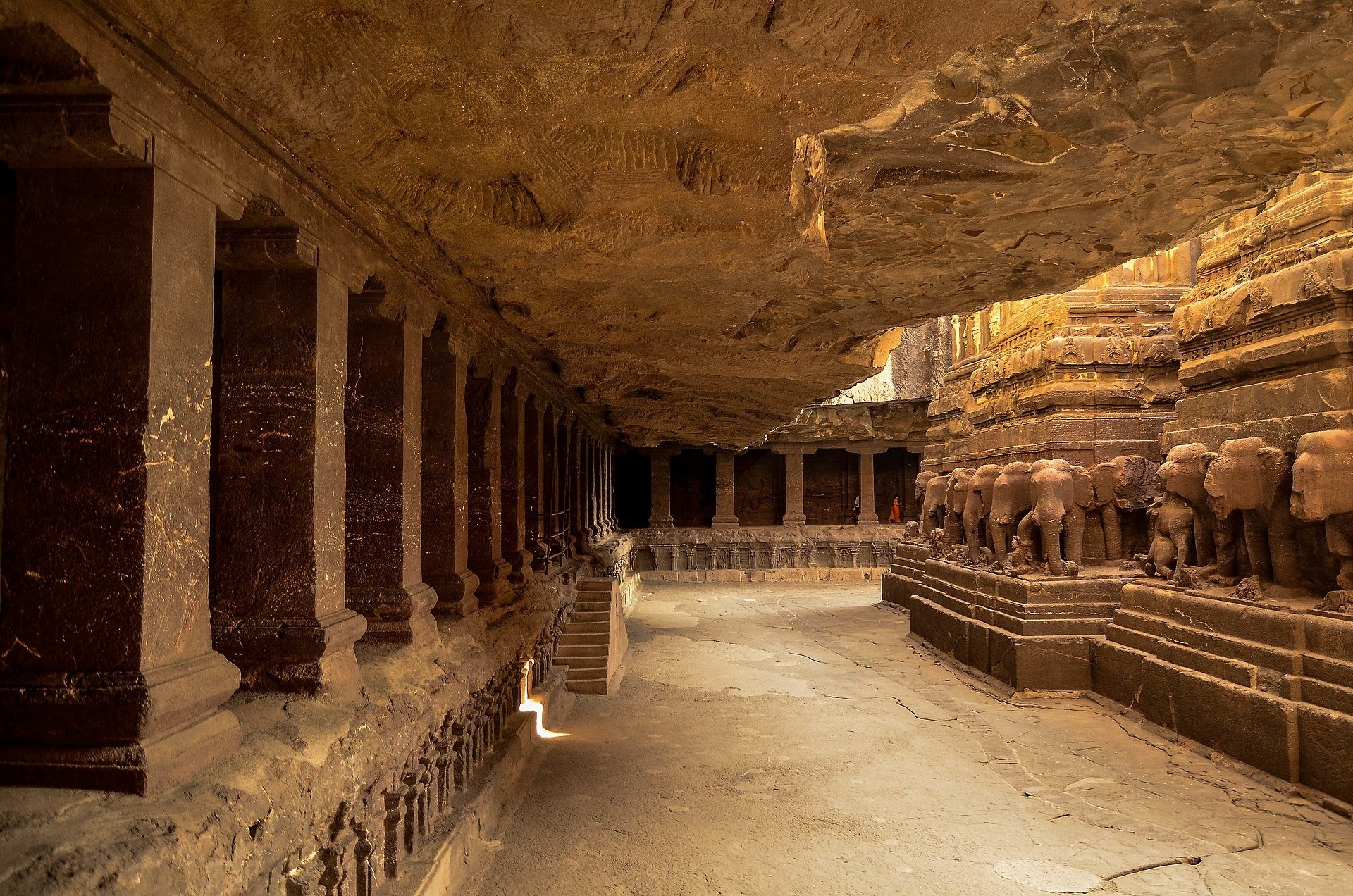1200 Years Old Kailasa Temple That Was Made From A Single Rock
The Kailasanatha Temple at Ellora, also known as Cave 16, is one of the most incredible examples of ancient Indian architecture.
Located in Maharashtra, India, this temple was carved entirely out of a single rock and is the largest of its kind in the world.
It was built during the 8th century by the Rashtrakuta Dynasty and is dedicated to Lord Shiva and represents the mythical Mount Kailash, Shiva’s heavenly abode.
The Kailasanatha Temple is part of the famous Ellora Caves, a group of 34 rock-cut temples and monasteries.

Origins and Symbolism: Victory of the Rashtrakutas
The Kailasanatha Temple was commissioned by the Rashtrakuta king Krishna I in the late 8th century CE.
The Rashtrakutas were a powerful dynasty in the Deccan region of India, and this temple is believed to symbolize their victory over the Chalukyas, their former overlords.
The king wanted this temple to be grander and more impressive than any other temple of the time, which is why it was built on such a massive scale.

Scholars suggest that the design of Kailasanatha was influenced by the Lokeshvara (Virupaksha) Temple at Pattadakal, built by the Chalukyas.
The temple is dedicated to Lord Shiva, and its name, Kailasanatha, is a reference to Mount Kailash, Shiva’s mythical abode.
The temple’s iconography, which includes depictions of Shaivite myths and avatars of Vishnu, reinforces the Rashtrakuta’s claim to cosmic and political order, aligning themselves with the divine power of Shiva.
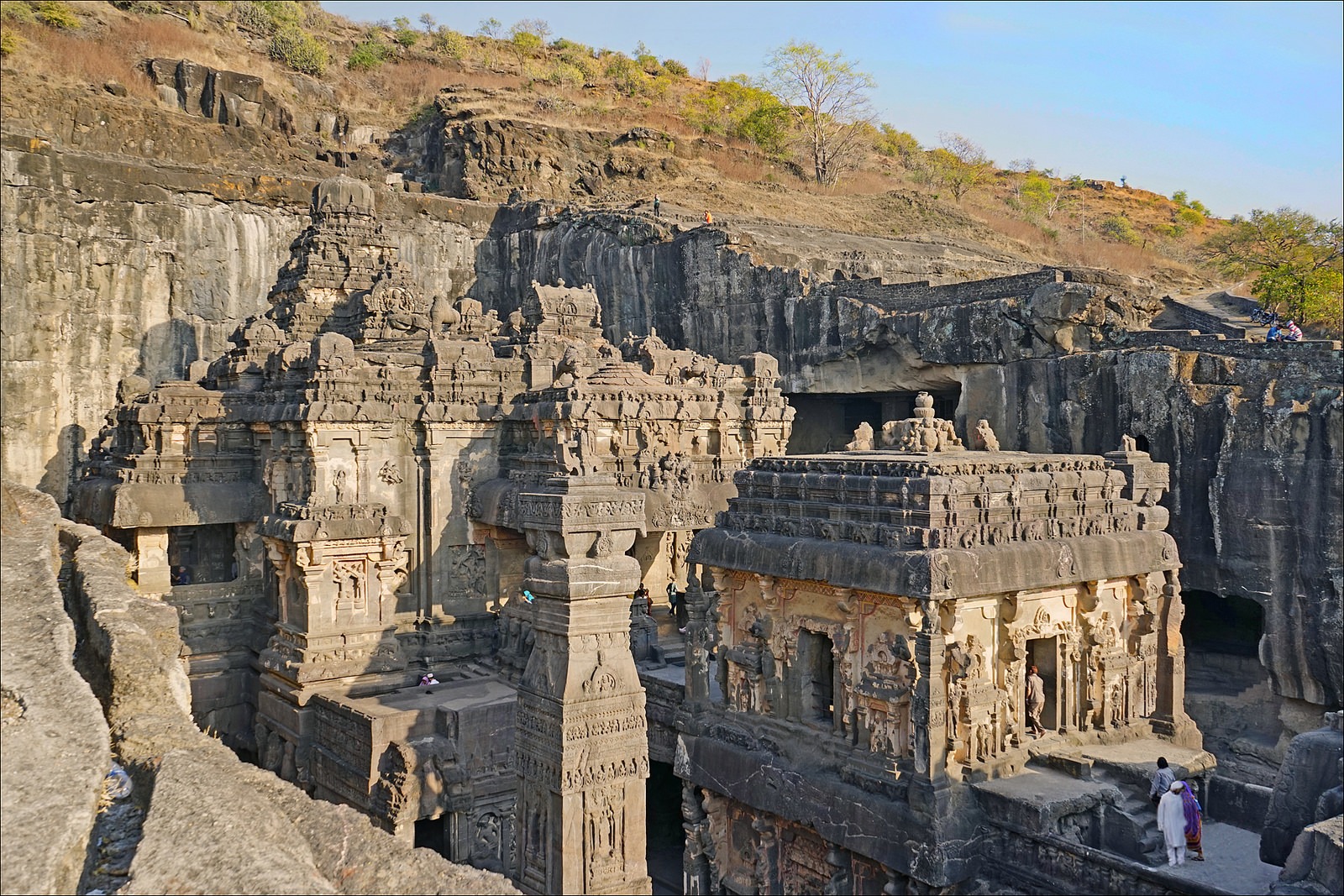
A Freestanding Rock-Cut Temple
One of the most impressive things about the Kailasanatha Temple is the way it was constructed.
Unlike traditional buildings (Ajanta and Badami) that are built from the ground up, this temple was carved from the top down.
Workers started from the top of the rock and gradually made their way down, carving the intricate designs and rooms as they went.
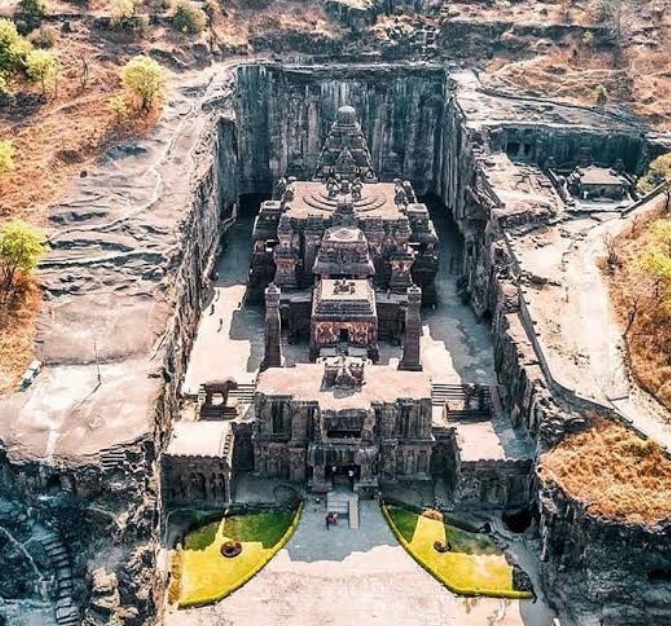
They had to remove more than two million tonnes of rock to shape it into the form of a temple, and it is believed to have taken over 20 years to complete.
The result is a structure that looks as if it was built brick by brick, but it was actually carved directly from the mountain.
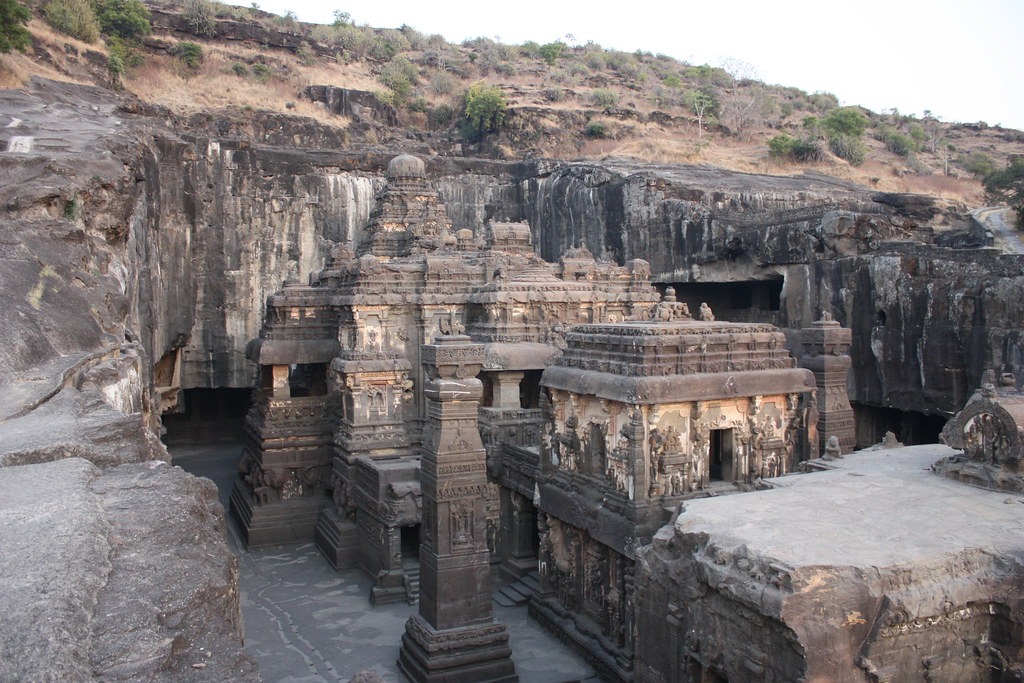
The Temple Layout
The Kailasanatha Temple is designed like a typical Hindu temple but on a much larger scale.
As you enter through the gopuram (gateway), you are greeted by an open courtyard with two massive stone elephants standing on either side.
These elephants were carved to give visitors the impression that they are being welcomed by the animals themselves.
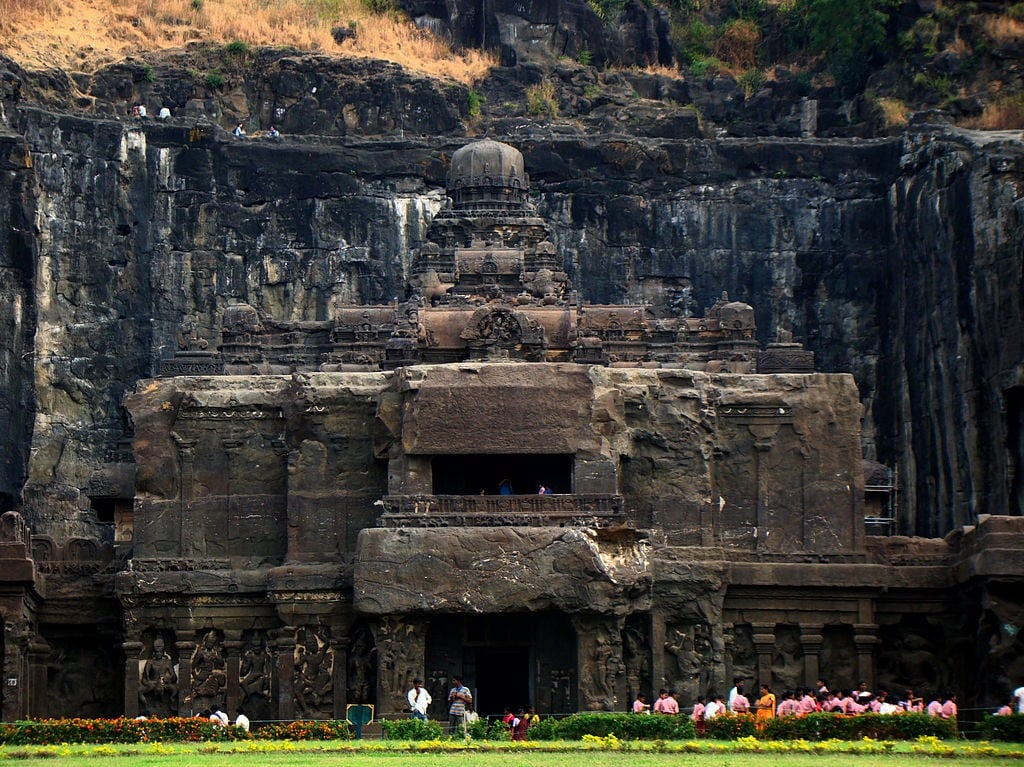
The temple is divided into two main parts: the upper level, where the main shrine is located, and the lower level, which is filled with detailed carvings that tell stories from Hindu mythology.
The main sanctum of the temple, called the garbhagriha, houses a Shivalinga, a symbol of Lord Shiva.
In front of the shrine is a Nandi mandapa, a pavilion dedicated to Nandi, the sacred bull that serves as Shiva’s mount.
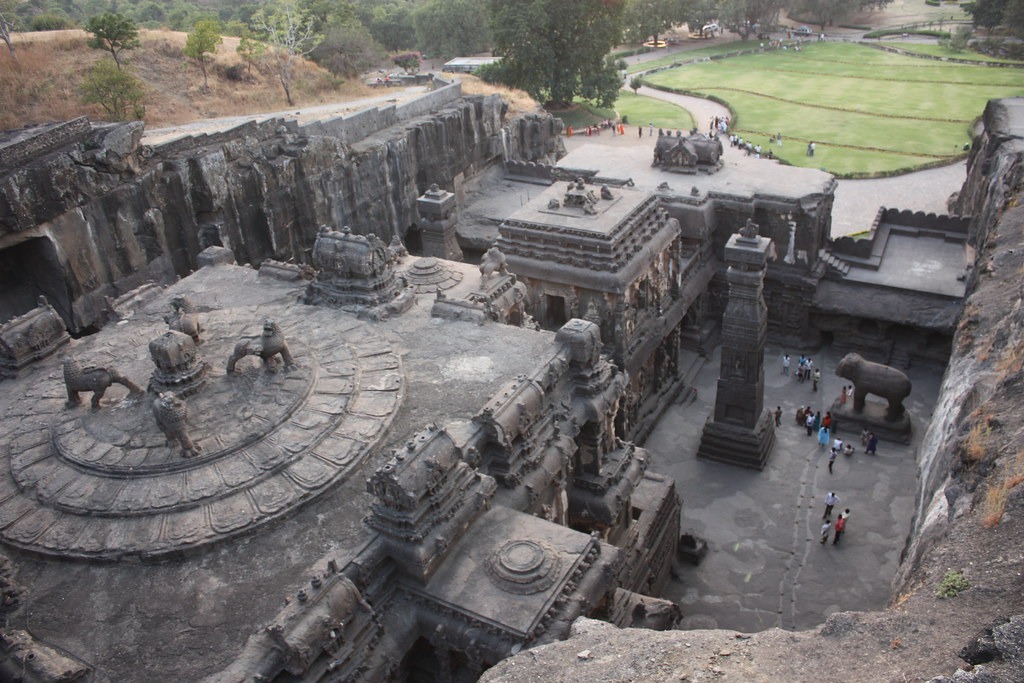
Carvings and Sculptures
The walls of the Kailasanatha Temple are covered with intricate carvings and sculptures that depict scenes from Hindu legends, especially those related to Shiva and Vishnu.
The southern side of the temple also features a frieze of the Ramayana, emphasizing the theme of cosmic collapse and restoration.

The north side is dedicated to various forms of Shiva, suggesting a duality between disorder and the restoration of cosmic balance, a theme that aligns with the Rashtrakuta kings’ role as protectors of dharma (cosmic law).
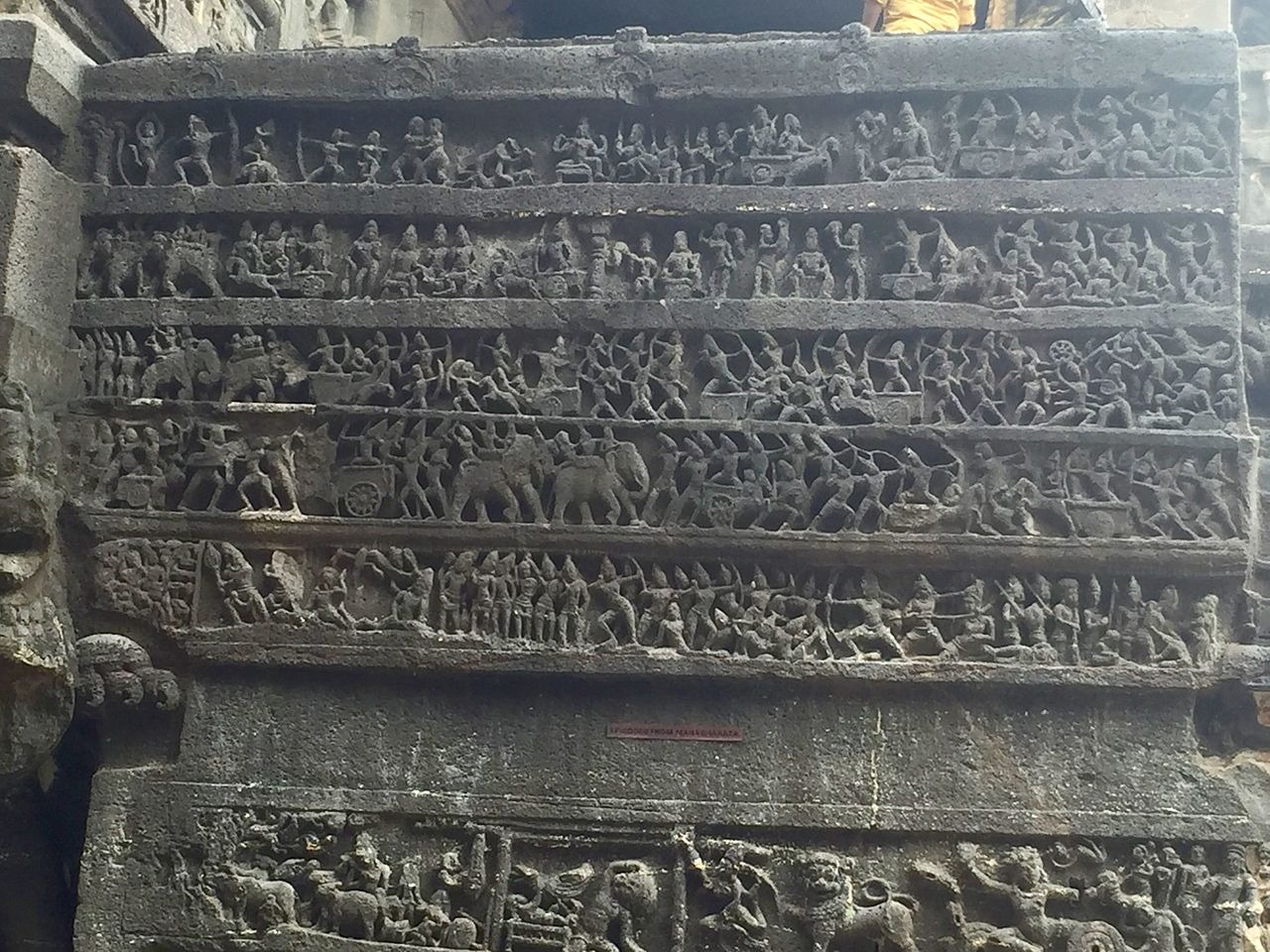
One of the most dramatic carvings is the scene of Ravana trying to lift Mount Kailash to challenge Shiva.
This scene, known as Ravananugrahamurti, shows the demon-king Ravana attempting to shake the abode of Shiva in a fit of pride, only to be subdued by Shiva’s calm and omnipotent presence.
The dramatic tension between Ravana’s whirling motion and Shiva’s calm has been interpreted as a political allegory for the Rashtrakutas’ dominance over their rivals.
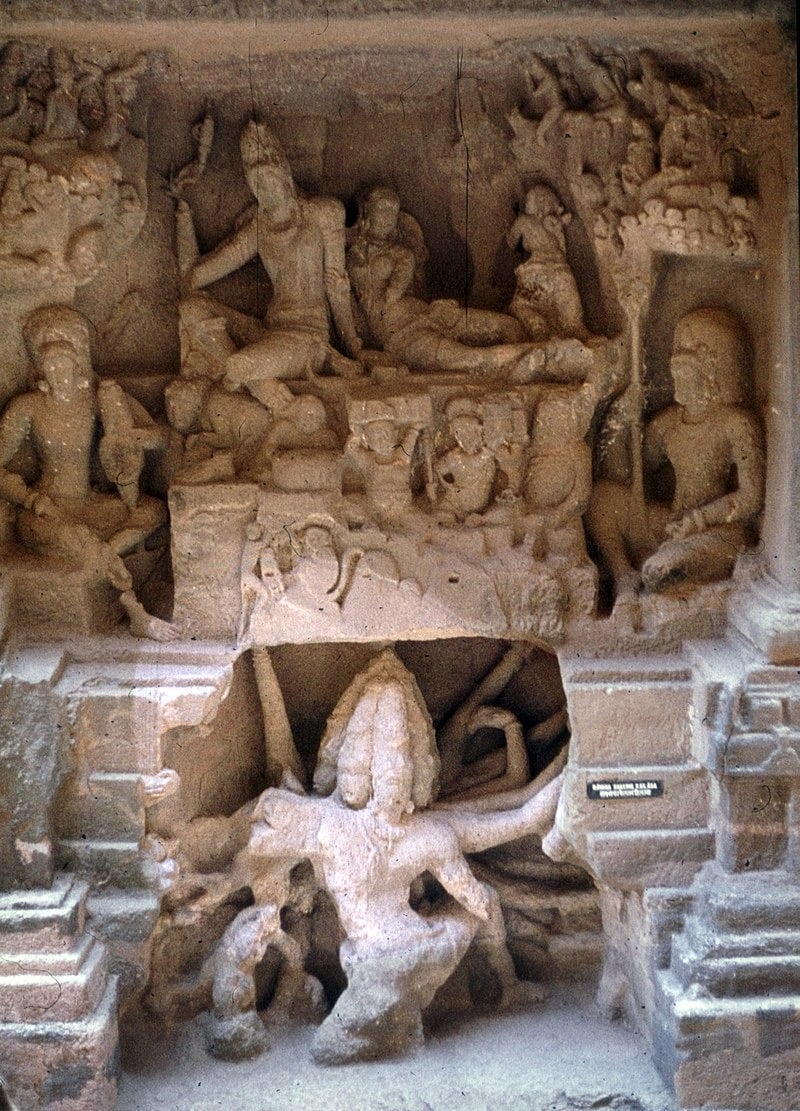
The entire temple is decorated with images of gods, goddesses, animals, and mythical creatures.
Some of the most striking sculptures are those of elephants and lions, which are placed around the base of the temple as if supporting its massive weight.

UNESCO World Heritage Site
In 1983, the Ellora Caves, including the Kailasanatha Temple, were designated a UNESCO World Heritage Site.
Today, the Kailasanatha Temple continues to draw awe-struck visitors from around the world.
